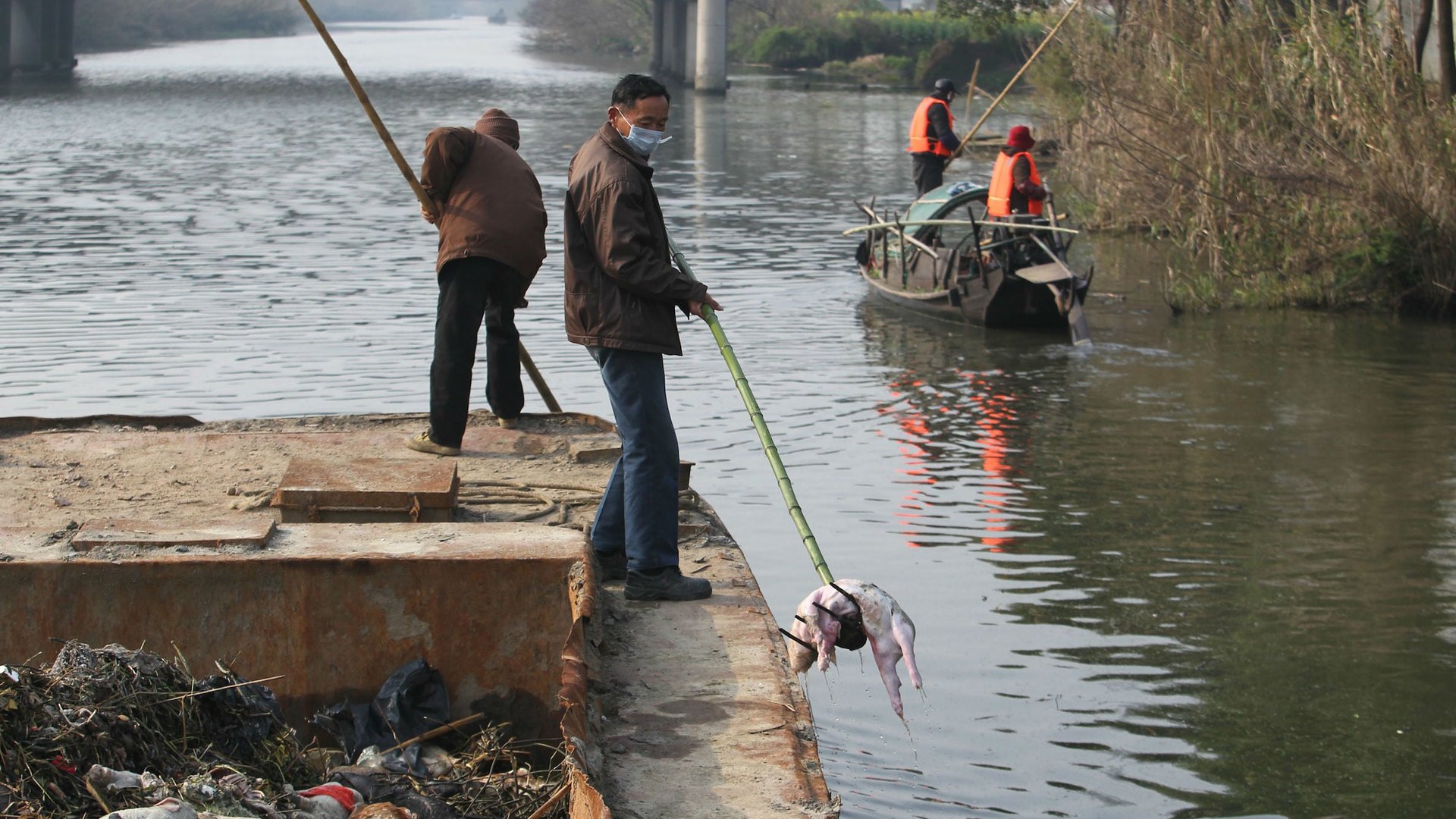Only 3% of Shanghai’s river and lake water is clean enough for household use
Authorities in Shanghai say over half of 2,500 lakes and rivers near the city are heavily polluted. According to a city water census (pdf), Shanghai’s first, 53% of water was below the worst grade of five levels, and only 3% of local surface water was clean enough for fish farms or household (including drinking) use. The census was done between 2010 and 2012.


Authorities in Shanghai say over half of 2,500 lakes and rivers near the city are heavily polluted. According to a city water census (pdf), Shanghai’s first, 53% of water was below the worst grade of five levels, and only 3% of local surface water was clean enough for fish farms or household (including drinking) use. The census was done between 2010 and 2012.
The poor grade for Shanghai, a shipping and financial hub near China’s Yangtze river as well as the East China Sea, is a bad sign of China’s uphill battle to clean its water resources. (The government said last month it would spend 2 trillion yuan ($327 billion) to clean China’s polluted water.) Shanghai’s poor grade comes a few months after thousands of pig carcasses were found floating along nearby rivers. Cancer rates in Shanghai, and the country, have been rising over the past decade, in part because of polluted drinking water.
It seems that “half” is the basis of several other alarming pollution statistics in China. Over the last 20 years, almost half of China’s rivers have disappeared in large part because of water extraction. Over half of China’s water sources are considered too polluted for drinking, and a quarter of water resources is considered unusable even for industrial purposes, according to a government pollution report in 2010. Authorities said in 2011 that 43% of state-monitored rivers were so polluted that they were not safe for human contact.